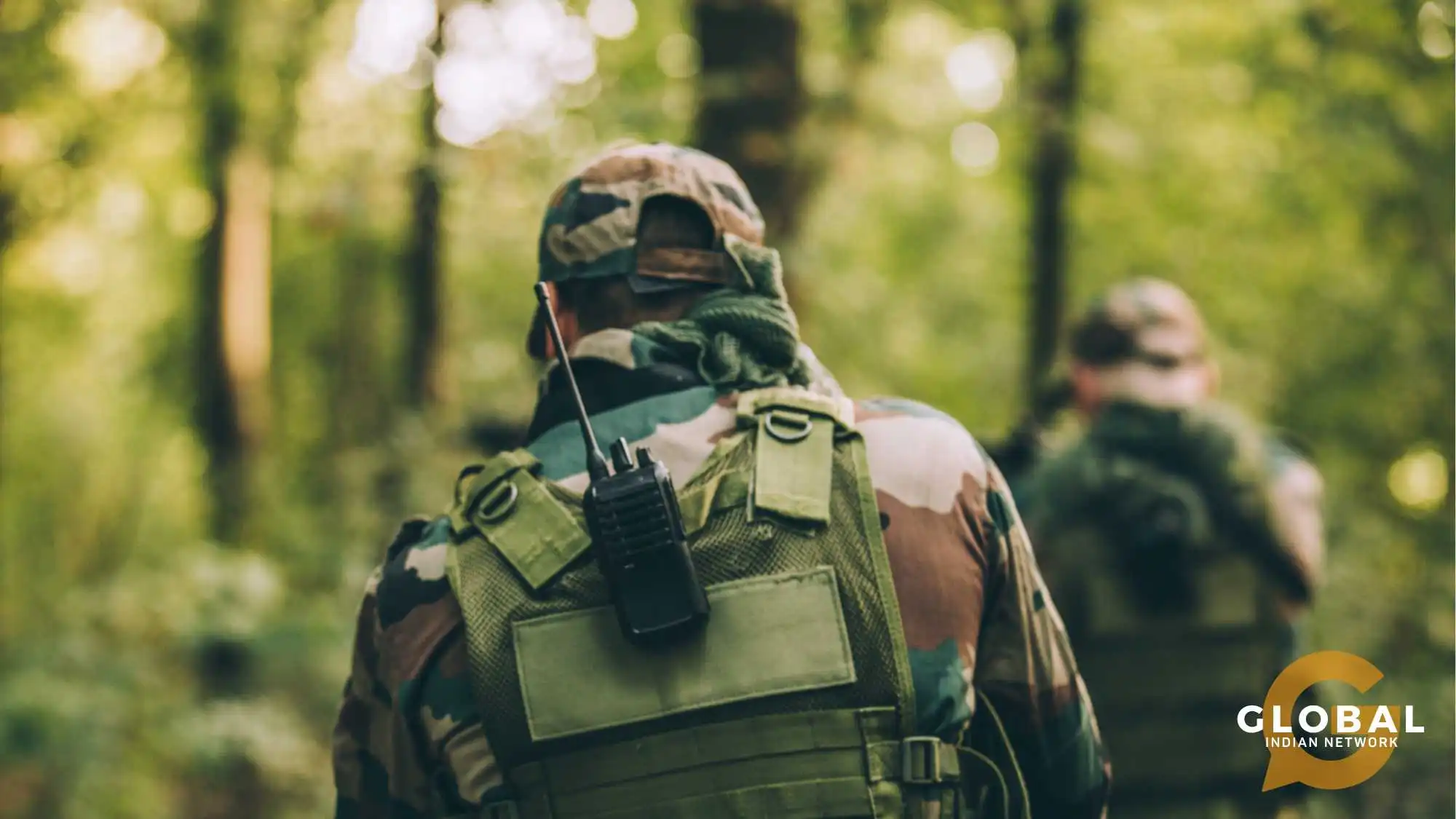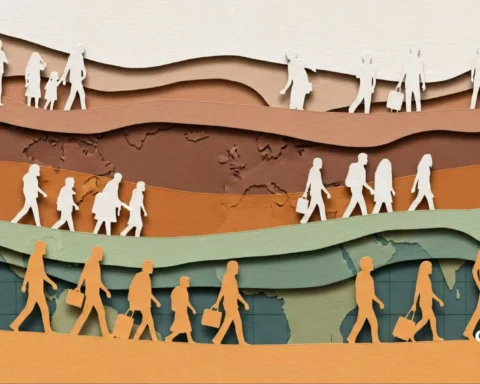‘A Visual Representation’
The conflict between Russia and Ukraine, also referred to as the Russo-Ukrainian War, is a multifaceted struggle that has evolved through various stages. It commenced in 2014 when Russia annexed Crimea, and tensions heightened in 2022, culminating in a large-scale invasion by Russian armed forces.
The Russian invasion of Ukraine began in February 2022, with attacks reported in major cities, including Kyiv. As of September 2023, the United Nations High Commissioner for Refugees (UNHCR) had confirmed 9,614 civilian deaths. The war caused a humanitarian crisis, leading to internal displacement and migration, with Poland recording the highest number of border crossings from Ukraine.
Herein, we look at the bilateral aid delivered to Ukraine by other nations. The focus is on military aid.
Timeline of the War
The timeline is noted below:
- Prelude to February 23, 2022: Tensions between Russia and Ukraine escalated over the years, particularly after the annexation of Crimea in 2014.
- Initial Invasion (24 February – 7 April 2022): Russia launched a large-scale invasion into Ukraine on February 24, 2022, marking the start of a new phase of the conflict.
- Southeastern Front (8 April – Ongoing): The conflict expanded to the southeastern front, with ongoing military operations and geopolitical developments shaping events.
Ongoing Developments
The conflict has drawn significant international involvement, with countries providing military aid and support to Ukraine. Various timelines and reports track the evolving situation, detailing key events and diplomatic efforts.
The Russia-Ukraine war has wide-ranging implications, impacting not only the two nations directly involved but also the broader geopolitical landscape.
Role of the European Union
The EU has imposed sanctions on Russia following Ukraine’s invasion, aiming to change its actions and affect its ability to act in the common neighbourhood. The EU has provided military assistance to Ukraine through the European Peace Facility, financing lethal weaponry, infrastructure, training, and equipment. The EU has expressed solidarity with Ukraine and condemned Russia’s war, emphasising unity and the need for deterrence and territorial defense. The EU has the potential to develop military capabilities to contribute to these efforts.
The European Peace Facility (EPF)
The European Peace Facility (EPF) is a funding mechanism for EU military and defense actions under the Common Foreign and Security Policy (CFSP). It aims to prevent conflicts, build peace, and strengthen international security. The EPF Committee manages the facility, with a budget of over EUR 12 billion for 2021–2027. The facility supports partner countries in addressing security challenges and complements the EU’s Common Security and Defense Policy missions.
EPF’s Association with the War
The European Peace Facility (EPF) has allocated 90% of its funding to Ukraine for the procurement of lethal weapons, infrastructure, training, and equipment. This aligns with the EPF’s mandate to prevent conflict, build peace, and strengthen international security. The EPF’s support for Ukraine complements the EU’s humanitarian, political, and financial response to the Ukraine-Russia conflict, enhancing its ability to prevent conflict and build peace.
Global Bilateral Aid
From January 24 to May 31, 2023, Ukraine received 71 billion euros in bilateral financial, humanitarian, and military aid from the United States and 35 billion euros from European Union institutions, including the Commission and EU Council, in response to the Russian invasion. U.S. bilateral aid commitments to Ukraine, as of May 31, 2023, amounted to 0.33 per cent of the donor GDP, with the most humanitarian and military aid.
The primary providers of military aid to Ukraine were the U.S., EU institutions, Germany, and the United Kingdom (UK). As of May 31, 2023, the U.S. had provided 42.8 billion euros in bilateral military assistance to Ukraine. This aid included the transportation of over 3.7 thousand air missiles and over 1.6 thousand air defense systems to Ukraine by July 2023. Additionally, the U.S. supplied the highest number of units of M777 howitzer artillery to the country.
Total Amount of Bilateral Aid to Ukraine in 2023
From January to May 2023, the US provided Ukraine with 71 billion euros in bilateral financial, humanitarian, and military aid. The US Congress has approved $46.6 billion in direct military aid since NATO began organising support. The European Union sent $85.1 billion, and the Joe Biden administration directed over $75 billion.
Breakdown of Bilateral Aid to Ukraine by Country in 2023
From January 24, 2022, to October 31, 2023, Ukraine received military, financial, and humanitarian aid from 41 countries, including EU member states, G7 members, Australia, South Korea, Turkey, Norway, New Zealand, Switzerland, China, Taiwan, India, and Iceland. The United States has provided over $75 billion in assistance to Ukraine, encompassing humanitarian, financial, and military support. The European Union has sent around $85.1 billion in aid to Ukraine, which includes contributions from individual EU member states.
Change in the Amount Over Time
The newly committed aid to Ukraine sharply decreased by nearly 90 percent between August and October 2023 compared to the same period in 2022. Ukraine is now depending more on a small group of donors, such as the US, Germany, and Nordic and Eastern European countries, for financial aid and crucial weaponry. The outlook is uncertain due to the European Union’s pending aid commitment not being approved and declining aid from the US.
The latest update indicates a significant decrease in newly committed aid, with only a few core donors continuing to provide substantial support. The proposed new US aid package has been postponed, and the approval of the EU’s Ukraine Facility has stalled. The main remaining active donors include individual European countries and NATO countries. This assistance includes heavy weapons such as artillery, main battle tanks, multiple launch rocket systems, infantry fighting vehicles, air defence systems, and fighter jets.
Military Aid Distribution Among Countries
Of the total EUR 25 billion in heavy weapon commitments (Jan. 2022–Oct. 2023), the US accounts for 43 percent of the total value, while all EU countries and institutions together account for 47 percent, with the remainder coming from various other donors, in particular the United Kingdom and Canada. In August, September, and October 2023, the EU countries provided EUR 780 million in heavy weapons, compared to EUR 500 million from the US, which is the country that has provided the most military aid.
New pledges by Germany and the Nordic countries since August 2023 have driven this trend, particularly through new Patriot and IRIS-T air defense systems from Germany and 19 F-16 fighter jets from Denmark as part of a joint aviation coalition with the Netherlands and the UK. Other examples of EU military aid cooperation include new joint procurement agreements between the Netherlands, Denmark, and the Czech Republic to provide Ukraine with 15 modernised T-72EA main battle tanks, along with a series of joint procurement schemes by Nordic countries to acquire 155mm ammunition.
Military Aid by the EU
The European Union has provided Ukraine with over $29 billion in military assistance, including an unprecedented $6 billion from the European Peace Facility (EPF). The EPF has financed the delivery of lethal weaponry, infrastructure, training, and equipment to support Ukraine’s defense against aggression. The EU’s military aid to Ukraine continues to increase, with an additional $1 billion being mobilised for Ukraine’s fast recovery as of February 2023.
Military Assistance by the EU
The EU has provided a wide range of military assistance to Ukraine, including lethal weaponry, infrastructure, training, and equipment. This includes over $29 billion in military aid, with $6 billion coming from the European Peace Facility (EPF). The EPF has financed the delivery of lethal weaponry, infrastructure, training, and equipment to help Ukraine defend against aggression. The EU has also supplied ammunition, air defense systems, tanks, fighter jets, drones, demining equipment, and logistical support. Additionally, the EU is the largest provider of military training to the Ukrainian armed forces, with 40,000 personnel to be trained under a $390 million program. The EU has also provided funding for Ukraine’s de-mining efforts in liberated territories. The types of military assistance continue to evolve, and the EU is actively mobilising additional support for Ukraine’s recovery.
The military assistance to Ukraine includes heavy weapons, light weapons, ammunition, non-lethal material military aid, and non-material military aid such as equipment, training, intelligence, soldier treatment, logistical support, and financial support to the government unless designated for humanitarian purposes.
Red Lines
“Red lines” refer to the limitations countries impose on supplying certain armaments to other nations, often arising from national security concerns, international agreements, or ethical considerations. Over time, countries like Germany and Sweden have reversed past policies against offensive military aid to Ukraine, while the European Union has provided lethal arms for the first time.
Types of Military Aid Provided by the EU
Despite opposition, the EU has pledged up to 20 billion euros ($21.4 billion) in military aid to Ukraine. They have provided equipment, training, intelligence, and logistical support during the Russo-Ukrainian War. The EU is proposing to revamp a $5 billion Ukrainian military aid fund, and seven packages totaling €3.5 billion have been approved since Russia’s invasion.
Countries That Refused Aid
Some countries initially hesitated to send lethal weapons to Ukraine due to concerns about potential consequences and the risk of their weapons falling into the wrong hands. These concerns included the potential to escalate the conflict, potentially leading to further violence, and the risk of the weapons falling into the wrong hands, such as non-state actors or extremist groups, posing a threat to regional or global security.
NATO Countries Reversing Their Stance
NATO countries are shifting their policies on providing offensive military aid to Ukraine, potentially due to geopolitical changes, risk assessments, or a desire to support Ukraine’s defence against external threats. This indicates a shift in the international response to the conflict and a willingness to provide more substantial military support, including offensive weapons.
Conclusion
The Russia-Ukraine War has left an indelible mark on global geopolitics, causing immense human suffering and reshaping international relations. As the conflict unfolded, key dynamics emerged, impacting various facets. The revanchist attitude of global leaders is not to be allowed. Unfortunately, the United Nations has failed the people.
Tens of thousands of lives lost, extensive infrastructure damage, and a profound humanitarian crisis has characterised the war, underscoring the toll on Ukrainian civilians. The aftermath of human loss is not calculable. The conflict has strained relations between Russia and the West, prompting significant diplomatic, economic, and military responses from the international community.
Ukraine has demonstrated resilience in the face of adversity, standing firm against Russian aggression and persevering despite challenging odds. The future remains uncertain, with questions about resolving the conflict, the role of external actors, and the lasting impact on regional stability lingering. The unanimous conclusion among experts is that a peaceful resolution is imperative. Efforts must focus on diplomatic channels to end the suffering, restore stability, and chart a path for Ukraine’s recovery.
We hope the geopolitical stunt will resolve soon enough so no more valuable lives are lost. They say all is fair in love and war. Yet, is war itself fair?









